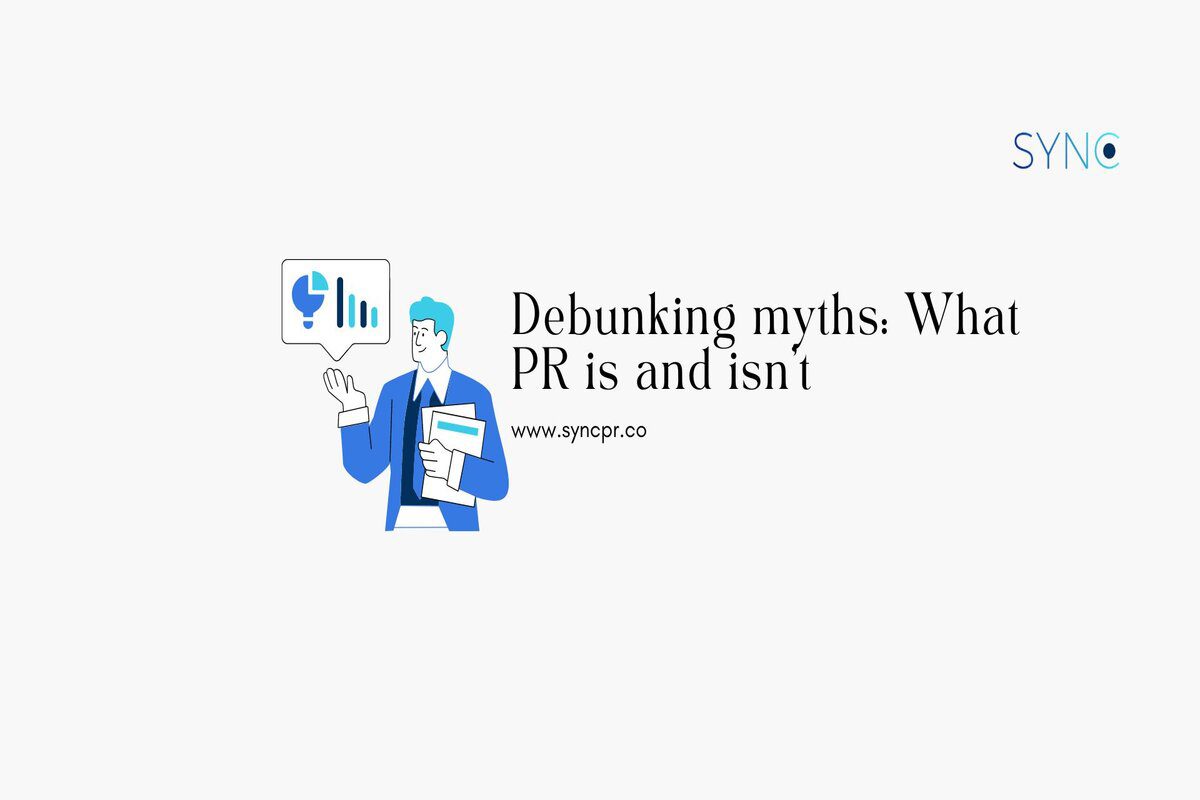Public relations (PR) is a powerful tool for businesses and individuals alike, with the global PR market anticipated to be worth USD 129 billion by 2025. However, there are common misconceptions about what PR entails, which may prevent businesses from benefiting from it. In this article, let us explore what PR is and more importantly, what it isn’t.
What PR isn’t: Simply getting the media to write about you
Public relations is a purposeful communication process that extends beyond traditional media coverage. While media relations are a crucial component of public relations, the field involves much more. PR involves managing and developing relationships with a variety of stakeholders, such as customers, employees, investors, and the general public. It is all about telling a captivating story (in fact, nearly three-quarters of PR professionals believe that storytelling is an important skill to have in the field), dealing with difficulties, and establishing a great reputation.
For example, imagine a nonprofit organisation dedicated to environmental conservation. Their public relations activities go far beyond obtaining media publicity. While gaining media attention is an important element of their approach, their public relations staff also works with local communities, organises awareness campaigns, collaborates with government bodies on policy initiatives, and keeps open lines of communication with donors and volunteers. In this context, public relations is about establishing a holistic approach to fulfilling their objective through managing relationships with many stakeholders, from the media to policymakers to the general public.
What PR isn’t: Advertising or marketing
Public relations, advertising, and marketing are distinct disciplines, each serving a particular function. The main differences between advertising and public relations (PR) are:
- Advertising is using paid advertising to reach a specific audience, whereas marketing is promoting products or services. Public relations, on the other side, is concerned with influencing public opinion through earned media, narrative, and reputation management.
- Public relations differs from advertising and marketing because it focuses on earned media and reputation management. Instead of buying awareness, public relations specialists try to win their audience’s trust and respect through authentic storytelling and effective communication.
To give an example, imagine a tech startup launching a product. While the marketing team creates commercials, targets certain demographics, and promotes the product’s features, the public relations team takes a different approach. They create appealing story angles about how the product solves real-world problems, get interviews with industry influencers to explain its impact, and deal with any possible crises.
When thinking about what PR is, it is crucial to remember that the goal of public relations is not to acquire ad space but to gain credibility, shape public opinion, and establish the startup as an industry leader. So, when trying to understand what PR is, it is important to keep these points in mind and set goals accordingly.
What PR isn’t: A short-term strategy
Instead, public relations is a long-term approach that demands consistency and patience. It is not a quick remedy for quick results. PR involves gradually creating trust and credibility, which can lead to long-term brand loyalty and favourable interactions with stakeholders. This is especially important since around 27% of journalists face issues in maintaining credibility, and 13% believe that PR helps them overcome problems with misinformation. Effective public relations initiatives are part of an ongoing process of engagement and communication.

For instance, when a company’s product is recalled owing to safety concerns, its public relations response extends beyond immediate damage management. It entails a prolonged effort to reestablish consumer confidence through open communication, increased safety measures, and continued participation. In this case, public relations is not a quick fix but rather a long-term commitment to rebuilding the company’s reputation and ensuring that its products are seen favourably by the public over time.
What PR isn’t: Just crisis management
Public relations is more than just a way to handle emergencies and deal with bad press. Crisis management is an important part of PR, but the field is much bigger than that. PR professionals work to build and keep a good reputation for their clients or organisations, even when there has yet to be a crisis. This includes things like strategic communication, building a good image, promoting a brand, and getting stakeholders involved.
For example, a tech company that wants to be seen as a leading player and an innovator in its field. PR helps deal with any bad press that might come up, but its main focus is on proactive strategies like thought leadership campaigns, industry partnerships, and community involvement projects. This shows that public relations is not just about handling crises but is also a powerful tool for shaping and improving an organisation’s image.
What PR is: A tool for overall business growth and branding
To sum up, understanding what public relations truly entails is incredibly important as PR is more than securing media coverage; it encompasses relationship-building, reputation management, and long-term strategic communication.
By addressing and correcting misconceptions surrounding PR, businesses and individuals can harness the true power of PR to build trust, credibility, and a positive public image. An effective tool for business growth and brand positions- that’s what PR is.
Are you interested in expanding your PR efforts for your organisation? Contact us at hello(a)syncpr.co to find out how we can help you!

